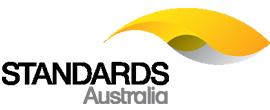(Article first published on: worldgbc.org |September 24, 2014)
Another recent study shows how a well-designed office can improve employees’ productivity inside the building… World GBC finds that a range of factors – from air quality and lighting, to views of nature and interior layout – can affect the health, satisfaction and job performance of office workers. For natural lighting and ventilation system, check out our site at http://www.eco.ph/
A new report from the World Green Building Council (World GBC) finds “overwhelming evidence” that office design significantly impacts the health, wellbeing and productivity of staff.
Health, Wellbeing and Productivity in Offices: The Next Chapter for Green Building finds that a range of factors – from air quality and lighting, to views of nature and interior layout – can affect the health, satisfaction and job performance of office workers.
The report – sponsored by JLL, Lend Lease and Skanska – also presents a simple toolkit that businesses can use to measure the health, wellbeing and productivity of their buildings and inform financial decision-making.
Understanding the link between workers and their workplace helps to drive the business case for higher quality, healthy and greener buildings, valued by investors, developers and tenants alike.
With salaries and benefits typically responsible for 90 percent of an organization’s expenditure, any higher construction or occupation costs are far outweighed by even small improvements in staff performance.
Jane Henley, CEO of the World Green Building Council, said: “The evidence linking good office design and improved health, wellbeing and productivity of staff is now overwhelming. There is unquestionably a clear business case for investing in, developing and occupying healthier, greener buildings.
“Most businesses are already sitting on a treasure trove of information that can have an immediate impact on their two biggest expenses – people and buildings. Understanding the relationship between the two can help businesses achieve significant competitive advantage.”
Claudia Hamm, Head of Strategic Workplace (EMEA) at JLL, said: “Major corporate clients are now recognizing the business benefits and productivity gains of buildings which bring out the best in their employees and are increasingly making their strategic real estate decisions with these in mind. This report reinforces the view that a building’s impact on its occupants must be included within financial considerations.”
Geoff Dutaillis, Group Head of Sustainability at Lend Lease, said: “Whatever business you are in, you are in the business of people. How a building ‘works for people’ should be the priority question. This report provides further evidence that workplaces with clean air, natural daylight and engaging and adaptable layouts all contribute to making healthier, happier and more motivated individuals who create stronger, more resilient and profitable companies.”
Staffan Haglind, Green Business Officer at Skanska, said: “The equation for our clients is very simple: a small percentage improvement in the health and productivity of your staff far outweighs any additional costs associated with commissioning or occupying a greener, healthier office. Giving employees the best possible conditions to perform and stay healthy is not only wise from a financial perspective, it’s just the right thing to do.”
Health, Wellbeing and Productivity in Offices builds upon the 2013 World GBC report The Business Case for Green Building which featured a chapter on the health and productivity benefits of green buildings.
The report will be launched in London on 24 September as part of World Green Building Week. Global launch events hosted by Green Building Councils will follow in Athens, Greece (24 Sep), Sydney, Australia (25 Sep), Manila, Philippines (25 Sep), Sofia, Bulgaria (26 Sep) and Bogota, Colombia (1-2 Oct). For more information on events, visit our events page.
The report can be downloaded here.
Summary of evidence
Indoor air quality: A comprehensive body of research suggests that better indoor air quality (low concentrations of CO2 and pollutants and high ventilation rates) can lead to productivity improvements of 8-11%.
Thermal comfort: Research demonstrates that thermal comfort has a significant impact on workplace satisfaction and modest degrees of personal control over thermal comfort can return single digit improvements in productivity.
Lighting and views of nature: Several studies have estimated productivity gains as a result of proximity to windows, with experts now thinking that views from windows are probably the more significant factor, particularly where the view offers a connection to nature.
Noise and acoustics: Research suggests that being productive in the modern knowledge-based office is practically impossible when noise provides an unwanted distraction. This can be a major cause of dissatisfaction amongst occupants.
Interior layout: The way the interior of an office is configured (including workstation density and configuration of work space, breakout space and social space) has been found to have an impact on concentration, collaboration, confidentiality and creativity.
Active design and exercise: Health can be improved through exercise, and so active design within a building, and access to services and amenities such as gyms, bicycle storage and green space can help to encourage healthier lifestyles of building occupants.
Toolkit to measure health, wellbeing and productivity
Financial metrics: Absenteeism, staff turnover, revenue breakdown (by department or per building), medical costs and complaints, and physical complaints.
Perceptual metrics: Studies which test a range of self-reported attitudes into health, wellbeing and productivity in the workplace can contain a wealth of information for improving office performance.
Physical metrics: Direct measures of the physical office environment, such as temperature, are key to measuring the effect on the health, wellbeing and productivity of workers. Exciting developments in this area such as portable and wearable technology are likely to substantially expand our understanding.
Steering Committee
Miles Keeping (Chair), Deloitte Real Estate
Dr Fiona Adshead, Independent Advisor
Staffan Haglind, Skanska
Claudia Hamm, JLL
Robert Lam, Wong & Ouyang
Roger Limoges, US Green Building Council
Prof Vivian Loftness, Carnegie Mellon University
Mark Nicholls, Retired Bank of America Real Estate Executive
Hector Sandoval, Carrier Enterprise
Ché Wall, Flux Consultants
Duncan Young, Lend Lease
Corporate sponsors of the report:
JLL, Lend Lease and Skanska
Project partners:
Colombia Green Building Council, Hong Kong Green Building Council, US Green Building Council and UK Green Building Council
Media Contact:
Karen Jamal
Communications
World Green Building Council
karen@kjcommunications.com
+61 2 6288 3419







